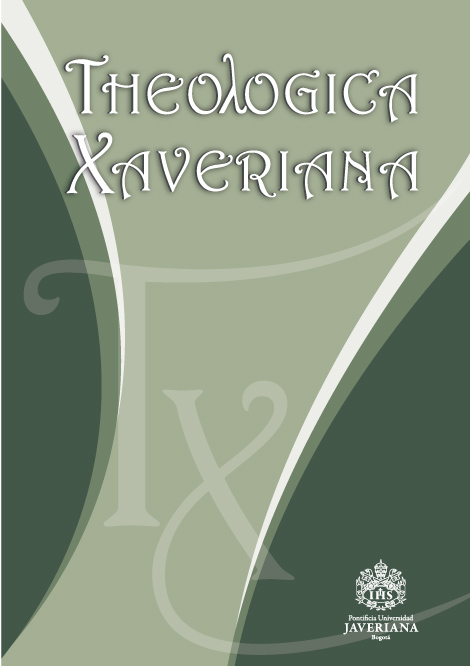Resumen
Mary Flannery O’Connor, a menudo considerada una de las mejores escritoras norteamericanas del siglo XX, parece haber respaldado la existencia de la “novela católica” como género particular. Este artículo muestra las características descritas por O’Connor sobre este género, puntualizando la constitución indefinida y problemática de dicha delimitación. Independientemente de la imposibili dad de definir el término, este artículo sostiene además que la explicación de O’Connor sobre el género trasciende el campo literario y muestra una visión distintiva de la fe cristiana y una teología sofisticada que denomino “gótico sureño”. La teología de O’Connor comienza con un realismo que cuestiona el yo cartesiano moderno, sacramentalidad que impregna la realidad inmediata y lo grotesco que interactúa con el misterio divino. La teología de O’Connor señala que las creencias cristianas se basan en narraciones, no en conceptos abstractos, e interactúa específicamente con el Sur de Estados Unidos, mostrando el misterio que reside en lo grotesco y aguardando con esperanza la llegada violenta de la gracia divina.
Bosco, Mark. “Flannery O’Connor as Baroque Artist: Theological and Literary Strategies.” In Renascence: Essays on Values in Literature 62/1 (2009): 41-61. Bruckner, D. J. R. “Concerning Hobbits and Philip Marlowe.” New York Times, Nov. 15, 1981.
Chamberlain, Stephen. “The Dispute between Gilson and Maritain over Thomist Realism.” Studia Gilsoniana 6/2 (2017): 177-195.
Cothren, Claire Renae. “The Evolving Southern Gothic: Traditions of Racial, Gender, and Sexual Horror in the Imagined American South.” Ph.D. dissertation, Texas A&M University, 2015.
Elie, Paul. “What Flannery Knew: Catholic Writing for A Critical Age.” Commonweal 135 (2008): 12-17. Georgetown University, https://www.commonwealmagazine. org/what-flannery-knew (access: August 26, 2018).
Garfitt, Toby. “What Happened to the Catholic Novel?” French Studies 66/2 (2012): 222-230.
Gilson, Étienne. Methodical Realism: A Handbook for Beginning Realists. Translated by Philip Trower. San Francisco (CA): Ignatius Press, 1990.
_____. Thomist Realism and the Critique of Knowledge. Translated by Mark A. Wauck. San Francisco (CA): Ignatius Press, 1983.
Glasgow, Ellen. “Heroes and Monsters.” The Saturday Review of Literature12 (1935): 3-35.
Goddu, Teresa A. Gothic America: Narrative, History, and Nation. New York (NY): Columbia University Press, 1997.
Lonergan, Bernard. Insight: A Study of Human Understanding. In Collected Works of Bernard Lonergan, Vol. 3. Edited by Frederick E. Crowe and Robert M. Doran. Toronto: University of Toronto Press, 2000.
Maréchal, Joseph. A Maréchal Reader. Edited and translated by Joseph Donceel, S. J. New York (NY): Herder and Herder, 1970.
Maritain, Jacques. Distinguish to Unite or The Degrees of Knowledge. Translated by Gerald B Phelan. Notre Dame (IN): University of Notre Dame Press, 1995.
_____. Science and Wisdom. New York (NY): Scribner, 1940.
_____. The Range of Reason. New York (NY): Scribner, 1952.
Niederauer, George H. “Flannery O’Connor’s Religious Vision.” America 197/21 (2007). America Magazine, https://www.americamagazine.org/issue/639/article/ flannery-oconnors-religious-vision (access: October 20, 2018).
O’Connor, F. Flannery O’Connor: Spiritual Writings. Edited by Robert Ellsberg. New York (NY): Orbis, 2003.
_____. “The Church and the Fiction Writer.” America Vol. 96/26 (1957): 733.
_____. The Habit of Being. New York (NY): Vintage Books, 1979.
_____. The Violent Bear It Away. New York (NY): Farrar, Straus and Giroux Edition, 2007. Kindle.
_____. Wise Blood. New York (NY): Farrar, Straus and Giroux Edition, 2007. Kindle.
Pinkerton, Steve. “Profaning the American Religion: Flannery O’Connor’s Wise Blood.” Studies in the Novel 43/4 (2011): 449-469.
Rahner, Karl. Spirit in the World. Translated by William Dych. New York (NY): Continuum, 1994.
Sullivan, Walter. “Flannery O’Connor, Sin, and Grace: Everything That Rises Must Converge.” Hollins Critic Vol.2 (Sept. 1965): 1.
Watkins, Stephen Robert. “Teilhard de Chardin´s View of Diminishment and the Late Stories of Flannery O´Connor.” Ph.D. Dissertation, University of Texas at Arlington, 2005.
Yaghjian, Lucretia B. “Flannery O’Connor’s Use of Symbol, Roger Haight’s Christology, and the Religious Writer.” Theological Studies 63/2 (2002): 268-301. https://doi.org/10.1177/004056390206300203

Esta obra está bajo una licencia internacional Creative Commons Atribución 4.0.
Derechos de autor 2020 Alfredo Ignacio Poggi



